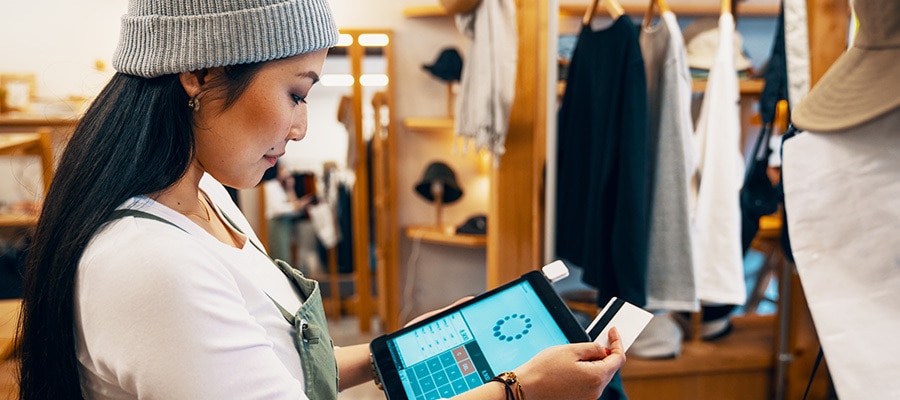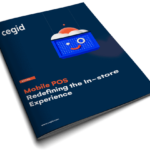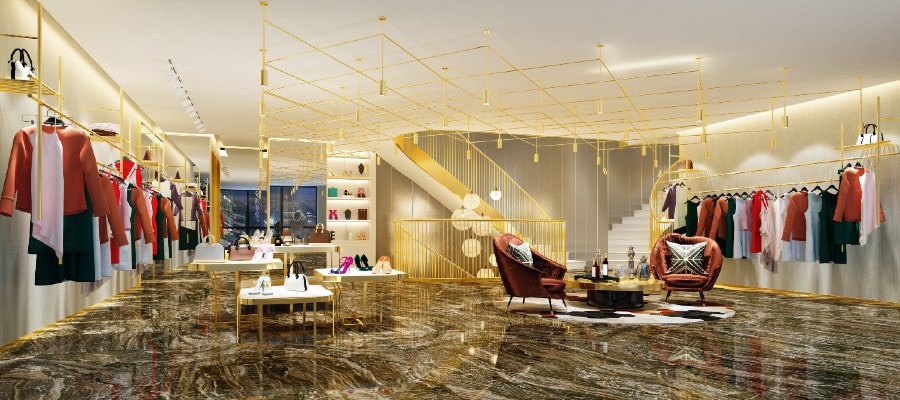Retail & Distribution
8 Examples of Retailers That Use Mobile In-Store to Drive Results
15 September 2020

Mobile in high-touch retail brands enables a richer, more engaging customer experience to deepen loyalty. Mobile in high-volume, low-price retail helps move customers and merchandise more quickly, boosting conversion rates. Mobile also proved invaluable in helping retailers pivot to new sales channels like curbside pickup and Click & Collect, in the wake of the COVID-19 global pandemic and this should become mainstream.
One reason mobile is proving so powerful is its ability to deliver retailers’ newly established data transformation capabilities to the front line of the brand experience. Retailers can tap mobile devices to access a rich choice of data and apps, to tailor the shopping experience to the customer’s expectations for that purchase.
That’s why so many analysts are bullish on the future of mobile in retail, by both customers and store associates. According to IHL Group, retail leaders are investing in better training and tools — including mobile devices — at a rate 71% higher than average retailers.
Enriching The Customer Experience
Specialty and luxury retailers are tapping mobile in unique ways to make their brand experiences stand out:
- Lancôme is leveraging in-store mobile tools in its flagships to enhance the customer shopping experience in-store from mobile check-out, contactless payments, queue busting to specific beauty apps including shade finders.
- Gucci is using in-store mobile so shoppers can see information or products beyond what’s available in-store, provide more personalized service options if in-store staff is unavailable, make purchases, create wish lists or schedule deliveries.
- Australian skincare company Aesop enables associates to access a single view of the customer, including data such as cross-platform history, loyalty status and preferences. This allows them to tailor the in-store visit to a customer’s individual needs and preferences, and to access endless aisle solutions to ensure any product can be fulfilled.
- Burberry’s R Message, an in-app chat service, blends the online and in-store experience. It allows high-spending customers to communicate directly with in-store associates, to ask about products or book private appointments for personal shopping and style advice. It also helps customers access a seamless payment system. Burberry hopes such experiences will drive more traffic to stores, where mobile-equipped associates can offer a fully assisted brand experience that results in upsells, cross-sells and increased loyalty.
- Nike has been a leader in driving app-enabled in-store experiences. When a shopper who is enrolled in its loyalty program enters a Nike store, its app geolocates her and offers store-specific features. The shopper can scan products to send to a fitting room, check size and color availability online and in-store, make reservations for Nike shoe fittings, unlock bonus rewards and pick up online orders. Nike Plus members in Tokyo can connect with store associates via the most popular messaging app in Japan for help with products or checkout.
Driving Speed and Flexibility
When speed is of the essence, mobile can step it up:
- Premium bag brand Radley addressed customer issues with long lines by offering staff-assisted mobile checkout at peak times. The retailer also offers an “order in store” app so customers can access the store’s entire inventory right from the store floor, with delivery via click-and-collect or another channel.
- Specialty retailer Schuh’s UK concept stores in Livingston and Bristol do not have queues at all; associates use tablets to check inventory and process transactions, saving the customer time while also maximizing the productivity of the selling floor.
The flexibility of mobile devices was particularly valuable as the COVID-19 pandemic took hold. Mobile devices enabled retailers to quickly ramp up curbside pickup, using mobile devices to pick and pack, and then again to manage queues and retrieve orders.
Lacoste responded with “Street & Collect”; shoppers can place orders via lacoste.com or by scanning a QR code affixed to each store’s front window. That scan gives customers access to in-store inventory so they can place an order that is then delivered to them on the sidewalk or at the curb.
To replicate the high touch in-store experience, Lacoste also rolled out “Croco Concierge.” It allows VIP customers to interact with associates through video calls for a virtual shopping experience, or to schedule a shopping appointment outside of normal hours.
In stores, retailers can use mobile to maintain social distancing between associates and customers, casting content from mobile devices to digital signage or kiosks to safely share a screen for demos, special orders and other assistance. Mobile also allows retailers to process transactions away from tightly spaced queues by enabling associates to process transactions anywhere in the store.
Mobile devices in the hands of customers and associates are proving a highly adaptable tool, empowering retailers to take their shopping experiences to the next level, whatever that experience requires. Retail the new way !
Read our latest ebook : mPOS – Redefining the in-store experience



